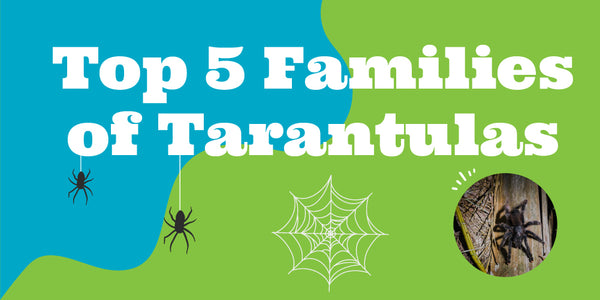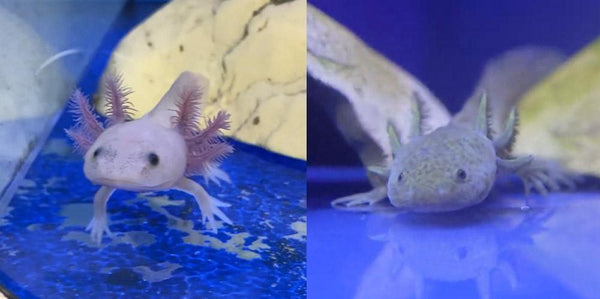Let's talk about aquarium plants! Aquarium plants require upkeep and maintenance just like any other aquatic or non-aquatic plant. Not only do they add a pop of colour and texture to your aquarium, but they function to recreate a natural habitat for our finned friends. Many require little to no maintenance, whereas others require regular upkeep and strict care requirements.
There's a huge array of options to choose from, offering different benefits to your aquarium and creating various visual effects. Here are some of the most popular plants, so that you too can transform your aquarium into an underwater oasis:

Taxiphyllum Barbieri AKA “Java Moss”
Spend some time researching aquarium plants or moss and you will surely run into Taxiphyllum Barbieri. Also known as Java Moss, this is by far the most common and widespread moss in the aquarium trade due to its undemanding care requirements and quick growth. It effectively attaches itself to objects around the aquarium, making it a popular choice to cover technical equipment and other objects. Java Moss is known as one of the best beginner aquarium plants.
In the wild, this moss grows in rainforests along treelines, in riverbanks, and along the forest floor. To set up Java Moss, simply tie it onto an object (like driftwood or rock) with a fishing line and let it do its thing. Here at Pisces, you will see Java Moss in many of our staff-maintained aquariums.
Care requirements:
Difficulty: Easy
Lighting: Low to bright light is okay
Temperature: 21-30 °C
pH: 5-8

Cryptocoryne wendtii is another popular aquarium plant among hobbyists. Sometimes referred to by its nickname– Wendt's water trumpet– this extremely hardy herb can thrive in a wide range of lighting and water conditions. Native to Sri Lanka, it's known to adapt depending on its environment. For example, a plant grown in an open space with sufficient light will see its leaves lay essentially on the bottom. Alternatively, smaller spaces with low light can lead the leaves to grow more upright.
This plant is a great option for those looking to add interest or versatility to their aquariums. It comes in several colour variations including red, brown, green, and combinations of the three. When adding Cryptocoryne wendtii to your aquascape, plant it in a nutrient-rich substrate.
Care requirements:
Difficulty: Easy
Lighting: Low-medium light
Temperature: 24 – 28 °C
pH: 6-7.5

Saggitaria Subulata, or Dwarf Saggitaria, is commonly seen in many aquariums due to its dramatic presence yet uncomplicated care requirements. Simply put, you get a lot of bang for your buck with this prominent, yet easy-to-care-for plant. Native to Columbia, Venezuela, and parts of the US, it’s recognizable by its tall, grass-like leaves and the small white flowers that float along the top of the tank on thriving plants.
This plant has slightly more complicated care requirements than others on this list, but we think its star power makes it worth it. The Dwarf Saggitaria requires regular pruning and trimming to encourage new growth, but it is hardy and will grow even outside of the care requirements listed below. Like Wendt’s Water Trumpet, plant it on a nutrient-rich substrate.
Care requirements:
Difficulty: Easy
Lighting: Avoid bright light
Temperature: 20 – 28 °C
pH: 6-8

Alternanthera Reineckii “Mini”
A mini variation of the same name, Alternanthera Reineckii “Mini” makes a prominent addition to any aquarium with its vivid, entirely red leaves. As one of the easier-to-care-for coloured aquarium plants, it's commonly used as a foreground plant to add a pop of colour and visual interest.
Cut the stems and insert them carefully into the substrate.
Difficulty: Moderate
Lighting: High (Higher red spectrum to keep that red leaf colour)
Temperature: 22 – 28 °C
pH: 5-7

Bucephalandra Pygmaea’s appearance can be summed up by its nickname: Wavy Green. This plant's relatively thick, wavy leaves offer a solid, dense appearance and provide a sturdy aquarium plant option. Immersed leaves will become covered in tiny white spots, dotting the plant's unique, crinkly texture and giving a unique visual addition to any aquarium. Bucephalandra Wavy Green is characterized as being a particularly hardy, slow-growing plant and has become another low-maintenance and beginner favourite for this reason.
To add Wavy Green to your aquarium, anchor it using a fishing line, similar to Java Moss.
Care requirements:
Difficulty: Easy
Lighting: Prefers low light
Temperature: 21.4 – 28 °C
pH: 6-8

Bacopa caroliniana is another star of the aquarium trade. Native to the USA, it's known for its minimal care demands and has long been used in fish tanks across North America due to its geographical availability. It can grow both on land and in water and can reach about 10-30 cm long as it sprouts small, light purple flowers. Unlike many other stem plants, its slow growth rate allows it to reach these heights without constant maintenance. With a solid presence, adaptability, and environmental tolerance, Bacopa caroliniana is a top pick for those wanting a stand-out yet easy-to-care-for aquarium addition. To add this fan-favourite to your aquarium, plant it in substrate, sand or gravel.
Care requirements:
Difficulty: Easy
Lighting: Prefers low light but can tolerate high
Temperature: 20 – 28 °C
pH: 6-8

Micranthemum Tweediei “Monte Carlo”
From Argentina, Micranthemum Tweediei, or “Monte Carlo,” is commonly used to cover the aquarium floor, giving aquariums that much sought-after carpet effect. It’s known as a fairly hearty plant and while it prefers medium to high lighting, it can tolerate fairly low light and various water conditions. However, due to its fast growth, it does need to be trimmed fairly frequently to keep the lower layers from dying.
To aDd Monte Carlo to your aquarium plant it in your tank's substrate.
Care requirements:
Difficulty: Average (Will benefit from C02)
Lighting: Medium-high
Temperature: 20 – 25 °C
pH: 6-7.5

Hemianthus Callitrichoides 'Cuba'
Hemianthus callitrichoides, or 'Cuba,' is one of the smallest aquarium ground creepers. Cuba is also sometimes called “Dwarf baby tears.” Its small, clustered leaves offer a similar appearance to that of Monte Carlo, but it's more compact and grows slightly faster. Because of this, it requires more frequent pruning than Monte Carlo. Oftentimes, Monte Carlo is noted as an easier alternative to Cuba, albeit slightly less dainty.
Due to its small roots, Cuba benefits from a dry start to allow it some growth before adding it to your substrate.
Difficulty: Moderate - Advanced (C02 is highly recommended)
Lighting: High
Temperature: 18 – 28 °C
pH: 5-7

Heteranthera Zosterifolia “Stargrass”
Heteranthera Zosterifolia, more commonly referred to as Stargrass, is recognizable by its quick-growing side shoots and pointy appearance. It can grow to be approximately 30-50 cm tall and 6-12 cm wide, and will quickly form a bush of oblong leaves that resembles a star. Leaves in the back of the plant will sometimes become black, and small blue flowers will sprout at the top of plants residing in open aquariums. Stargrass must be pruned regularly, as it can become so dense that no light will be able to reach the lower leaves.
Stargrass must be planted in a substrate about 2-3 inches thick and is typically used towards the back of the tank as background decor.
Difficulty: Average
Lighting: High
Temperature: 20 – 26 °C
pH: 5-8

Hydrocotyle tripartita, AKA Hyrocotyle Japan, is another hobby treasure with small, clustered, clover-like leaves. It found its fame after frequent use by famous aquascapers like Takashi Amano, who essentially introduced the hobby to the world of nature aquariums. It offers a soft, blanketed appearance to the floor of any tank, and requires frequent pruning to prevent overgrowth.
Hyrocotyle Japan can be planted in substrate or allowed to float.
Difficulty: Moderate
Lighting: High
Temperature: 18 – 28 °C
pH: 5-7
If you have any questions about starting an aquarium or caring for aquatic plants, don't hesitate to visit us at Pisces Pet Emporium in Calgary. Our knowledgeable aquatic staff is always ready to help you create the perfect home for your fishy friends. Happy planting!




